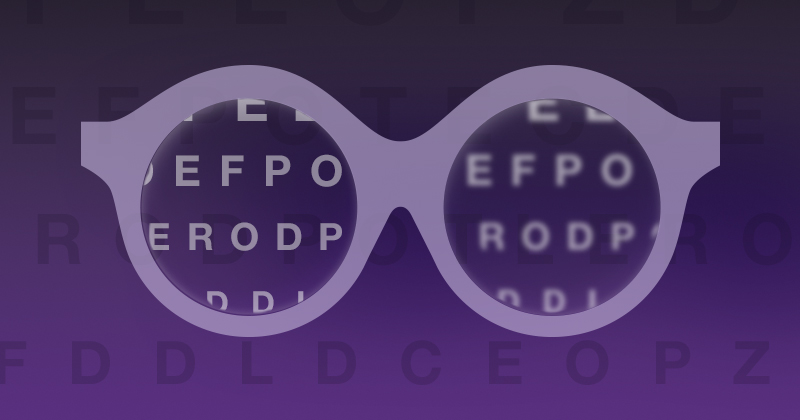How to Choose the Best Retina EHR for Your Practice

A day in the life of a retina specialist, based on conversations with my colleagues.
I would like to start today’s post with a fictitious story about a very real problem my colleagues and I have faced over the years.
“Dr. Lowe” is a well-respected ophthalmologist in his community. His private practice treats several hundreds of patients a week, split evenly between himself and two other practicing retina surgeons. As a well-respected eye-surgeon, it is not uncommon to put in over 70 hours a week, treating patients, documenting health records, and performing surgery. A typical day in the life of Dr. Lowe consists of the following:
He rushes into his office at 6:45 am, carrying his hot cup of coffee and his outdated, clunky laptop. By 7:00 am his office administrator shows up with a full list of his patients for the day.
“Mrs. Carlisle” is coming in for the second time this week and needs to move her appointment to 8:00 a.m. instead of 8:30 a.m. Dr. Lowe badly wants to accommodate her, due to a very complicated vitrectomy he performed earlier in the week. She was having extremely rare side effects. His office admin, “Jennifer,” is patiently waiting with an iPad and a clipboard in hand for his decision. His buzzing cell phone lets him know it’s time to add prelim notes for his first nine patients. He takes the iPad from Jennifer to access the electronic health records (EHR) system, which has been extremely difficult to navigate, to say the least.
Looking at his patient portal on his laptop, he notices Mrs. Carlisle’s information has partially disappeared. When he tries to open up the patient information portal on his iPad, he runs into the common snag of a very slow loading ophthalmology EHR system. It finally finishes loading, only to reveal the system failed to save his final changes. Now he has to start from the beginning, because in the current EHR on his iPad, once you made notes it was almost impossible to edit them. If that wasn’t enough, he noticed Mrs. Carlisle’s surgery was incorrectly documented, and while he was typing out her complications with the vitrectomy, his analysis got cross-referenced with another patient’s. He impatiently asks Jennifer if she has any suggestions, or if she could possibly find the time today to fix the documentation.
That’s when she tells him that the office assistant has called in sick and she will have to man the phones all day. The time was already 7:30 a.m. He needed to prepare for the eighteen patients coming in before lunch. The bugs in his ophthalmic EHR were continuing to slow him down. As he read through his notes for the day on his first nine patients, his eyes glazed over. Dr. Lowe’s EHR was giving him double vision.
If this sounds all too familiar, it might be time to start the process of selecting a new specialty-specific EHR. As an ophthalmologist specializing in retina for over thirty years, I have put together my coveted top 5 things to look for when choosing a retina EHR for your practice.
#1. Be specific. Specialty-specific to be exact.
Choosing a retina EHR system that adapts to your specific needs couldn’t be more important in today’s retina practice. Even a typical ophthalmology EHR will fall short in terms of addressing retina-specific workflow needs and descriptions. Within ophthalmology EHR systems, having specific built-in codes and functionality pertaining to subspecialties, such as retina for example, is also doubly important. With the increase of wet age-related macular degeneration (AMD), patients need to be seen much more frequently. More patient appointments translates to even less time that could be spent on proper documentation and reporting. Because of this increase in patient visit demand, time has never been a more valuable commodity when it comes to having ophthalmology EHR software that can keep up with a retina doctor’s demanding schedule.
Specialty-specific EHR platforms can do two things:
1) They can help save valuable time.
2) They can help increase the overall patient-care experience.
EHR systems should be tailored for your specialty-specific workflows and should come with built-in adaptive learning for each diagnosis, symptom and disease in your speciality. If you were tasked with cooking a 3-course authentic Italian meal from scratch, you wouldn’t use a French cookbook. Similarly, the EHR systems on the market that aren’t specialty-specific are loaded with ingredients, but not necessarily the right ones.
Now more than ever, it’s important to be on an EHR system that is specialty-specific and ready to go, which can help you save time and improve the overall health of your practice.
#2. Image management is key
Scrolling through dozens of images is not fun when the system is slow to respond or inefficiently keeping track of micro details. Having a seamlessly integrated image management system to accompany your ophthalmic EHR is critical. Retina image management allows data to be stored online, and as you view and manipulate diagnostic images, each little detail gets stored , letting you access it from virtually anywhere as long as you have Wi-Fi. Some other helpful things image management should be able to do:
- Easily compare different diagnostic images and reports side by side
- Access patient’s retina and vitreous imaging studies in one easy-to-use place
- Compare past images with current images, which can be used to help view changes over time in situations like macular degeneration, diabetic retinopathy, etc.
- Add retina images and reports into patient’s charts with a single click
Without image management, I would lose several hours trying to keep up with every single change within patient portals. Speaking from experience, the ability to manipulate high-quality images from an iPad, iPhone or desktop has helped out tremendously when I’m face-to-face with a patient. Considering how many patients I see in one day.
#3. An analytics platform you can really sink your teeth into
Some EHR systems already come equipped with a form of analytics—the problem is, it’s hard to gather the data and you have to do a lot of digging and research, making it difficult to run a report. Specialty-specific EHR systems allow patient care data and coding patterns to be easily accessed and available.
A retina analytics platform helps you keep track of anti-VEGF utilization reports, track diagnoses and come to possible conclusions made during treatment plans.
A retina analytics software that integrates with your EHR can help eliminate digging through multiple screens and portals, keeping everything in one spot.
Provider analytics is a helpful tool that allows you to see how you’re doing compared to other ophthalmologists in your field of study.
When your EHR captures structured, actionable data at the point of care, this in turn powers a retina analytics platform that integrates seamlessly. Data can then be easily parsed out and dispersed, leading to invaluable conclusions.
#4. It’s all in the cloud – a beautiful native cloud, that is
Storing everything in the cloud has caused some skepticism in the past, however it really is a safe and efficient way to run your busy practice. Specifically, having a native mobile cloud-based EHR allows for easy access to patient data, analytics, scheduling and much more. It’s also important to understand the distinction between a hybrid cloud and an ASP. ASP stands for application service provider, and offers a hybrid ‘hosted’ model, delivering another vendor’s software through the internet. I find that native mobile cloud-based EHRs are the best way to go for me. They allow access to your data without using a third party, improving overall accessibility to critically important information and documentation.
#5. Patient engagement – the big picture
What’s better than having a successful practice that you can really feel good about? Having happy patients that are more likely to recommend you to their friends. Patient engagement tools, such as portal, kiosk, reminders and surveys all cohesively work together to help provide a picture of how satisfied your patients really are. Having patient engagement solutions that integrate or interface with an EHR creates an atmosphere where patients can feel empowered.
So now what?
With a demanding doctor-patient schedule combined with more and more server hang-ups, Dr. Lowe’s busy ophthalmology practice had no choice but to upgrade to a state-of-the-art EHR system, fully equipped with the above listed features. Modernizing Medicine®’s very own retina EHR system, EMA®, is often found to be very helpful within the ophthalmology practice.
A slow EHR system that is not specialty-specific can hinder your overall workflow and productivity. Implementing a state-of-the-art EHR, such as EMA, works with you as you diagnose and treat patients, by way of it’s adaptive learning functionality and intuitive interface.
Here’s to good health, and a very healthy and happy ophthalmology practice!





